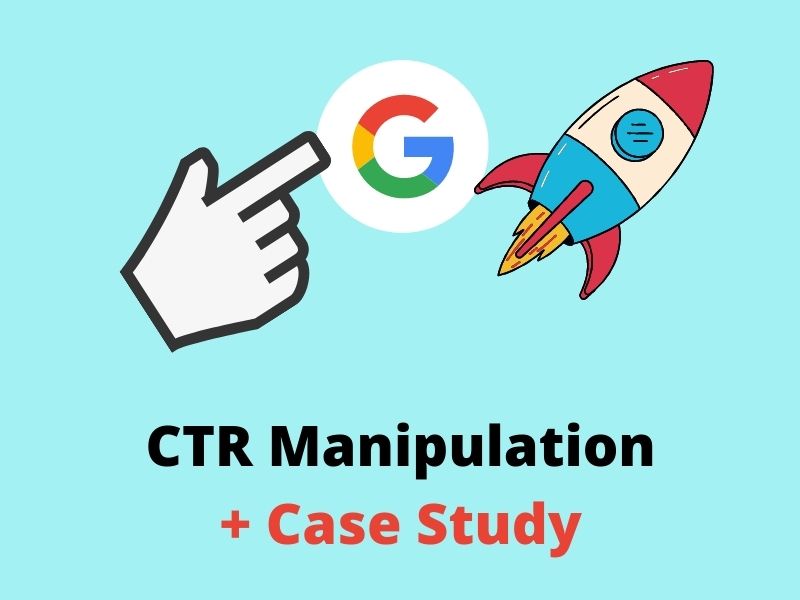The Effect of CTR Adjustment on Your Digital Marketing Success
The destructive effects of CTR control on electronic advertising and marketing endeavors can not be overstated. As the electronic landscape comes to be progressively affordable, the honesty of efficiency metrics is paramount for making informed decisions. Discover exactly how CTR adjustment can compromise the really structure of your marketing success, influencing not simply the numbers however the reliability of your entire advertising and marketing method.

The Makeup of CTR Control
In the world of digital marketing, comprehending the detailed workings of Click-Through Rate (CTR) control is critical for advertisers and online marketers. CTR control entails methods intended at unnaturally inflating the number of clicks on an online ad to enhance its efficiency metrics.
Additionally, adjusting CTR can include deceptive customers via deceptive advertisement positionings, misleading call-to-action buttons, or irrelevant material to lure clicks. These methods not just distort the true performance of an ad campaign but can additionally result in squandered marketing budget plans and damage to a brand's reputation. Recognizing the makeup of CTR adjustment is essential for marketers to identify and battle illegal tasks, guaranteeing that their digital advertising initiatives produce authentic interaction and conversions.

Risks Related To CTR Adjustment
One significant hazard originating from CTR adjustment in electronic advertising and marketing is the erosion of count on in between marketers and customers. When marketers engage in manipulating click-through rates (CTRs), they are basically tricking customers by synthetically inflating the viewed appeal or importance of their ads. This adjustment can lead to customers really feeling misled or deceived, causing a breakdown of count on in between them and the advertiser.
In addition, CTR adjustment can also have damaging effects on the overall digital marketing ecosystem. By distorting the metrics that marketers rely on to gauge the performance of their projects, CTR control undermines the integrity and effectiveness of digital advertising platforms. This can eventually result in an uncertainty in the market in its entirety and deter advertisers from investing in electronic advertising and marketing.
In enhancement, the technique of CTR manipulation can cause monetary losses for marketers. When clicks are falsely created, marketers wind up paying for communications that do not convert right into real leads or conversions, squandering their advertising budget plan on deceptive activity. This can have a considerable influence on the ROI of their marketing efforts and hinder their overall success within their target audience.
Identifying Indicators of CTR Control
Detecting indicators of CTR control in digital marketing campaign is vital for advertisers to keep openness and integrity in their advertising efforts. One usual indicator of possible control is an unusually high CTR contrasted to sector benchmarks. If the CTR appears also great to be real, it might suggest deceptive tasks such as click crawlers or click farms synthetically blowing up engagement metrics. Unexpected spikes or fluctuations in CTR without any type of sensible explanation can likewise be a warning.
An additional indication is a high CTR coupled with low conversion rates. If a project is driving a substantial quantity of clicks yet those clicks are not equating into conversions, it might recommend that the clicks are coming from non-human sources. In addition, an overmuch high CTR on certain advertisement positionings or key words compared to others in the exact same campaign may indicate manipulation to increase performance metrics artificially. Advertisers should closely keep track of these metrics and examine any anomalies to ensure the integrity of their electronic advertising initiatives.
Consequences of CTR Manipulation
Discovering signs of CTR control is pivotal in securing the reliability and performance of electronic marketing projects. When click-through rates are synthetically pumped up with control, the repercussions can be detrimental to both advertisers and systems. One substantial repercussion is a waste of advertising spending plan, as clicks generated through adjustment do not stand for authentic passion from prospective customers. This leads to a reduction in roi and you can check here a skewed understanding of project performance.
Furthermore, CTR control can damage the credibility of a brand name. If potential clients suspect that a brand is participating in deceitful techniques to enhance CTR, it can wear down trust fund and reputation. This loss of trust can have lasting effects on client commitment and brand assumption, influencing future advertising initiatives.
In addition, systems may penalize advertisers caught taking part in CTR manipulation by imposing restrictions or also putting on hold accounts. This not just hinders current projects but can additionally hinder future marketing opportunities on the platform. In general, the effects of CTR this link adjustment highlight the value of maintaining transparency and moral methods in digital advertising and marketing.
Approaches to Combat CTR Control
To battle CTR adjustment in digital marketing, it is vital for advertisers to execute aggressive strategies that safeguard the integrity of their projects and support ethical requirements. GMB CTR Manipulation. Additionally, applying rigorous ad positioning guidelines and using trustworthy advertisement networks can help decrease the threat of click fraud.

Verdict
To conclude, resolving CTR adjustment is important in keeping the integrity and efficiency of electronic advertising and marketing efforts. By recognizing the threats, recognizing indications, and implementing methods more information to fight manipulation, advertisers can secure their budgets, data precision, and brand online reputation. Upholding openness and trust fund in electronic advertising techniques is essential for promoting authentic engagement with target market and achieving effective project end results.